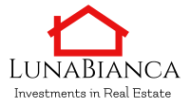Examining an Investment propery
HOW TO QUALIFY AN INVESTMENT PROPERTY:
Investor do what is traditionally called BOE ( Back of the Envelope analysis) where the GOAL is to quick dismiss project that do not make sense for our investment strategy.
An Investor is usually looking for a net cash flow and/or wealth building: a return of their original investment plus appreciations.
Cash Out : Purchase and Operating expenses of the investment. How much money the investment costs and when the money goes into the investment
Cash In : Yield or early cash flow, plus a large cash flow at time of sale. We can use Excel to estimate / predict much money the investment produces and at what time.
Risk : How predictable are the cash flow ? How many things have to go right to have a positive cash flow? Investors seek higher financial returns when they feel like they are facing higher risks.
Costs To calculate the return of a rental property you have to include purchase price, closing costs, renovation costs, maintenance costs, vacancy, real estate taxes, loan interest, net operating income, selling value and selling costs, all for several years down the line.
What is good, however, is that the portion of the loan that goes toward the principle is money that goes to you. In addition, in most cases, both depreciation and interest paid can be deducted from your income to lower your taxable income (confirm this with your accountant). Lets see if we can put all of this together but first lets look at this example:
A Real Life Example from Forbes.com ( just a reading I found somewhere)
Jenny wants to build wealth through rental properties. So Jenny finds a duplex for $250,000 in her neighborhood. After running a careful analysis, she determines that it is a good deal. Jenny uses a $50,000 down payment and obtains a 30-year loan for $200,000. Combined, both units bring in $3,000 per month, but Jenny’s expenses average just $2,500 per month, leaving her with $500 per month in cash flow, which increases each year as rents climb with inflation. Although that income is taxed, she doesn’t have to pay any because of the depreciation deduction she gets on the property, thus part of the tax benefits of owning it. Over the next 30 years, the value of the home increases to $600,000 (a 3% per year increase due to appreciation). Finally, each year during those 30 years the loan has been paid down, and Jenny owns the duplex free-and-clear. She now has an asset worth $600,000, plus she’s now making thousands per month in cash flow.
- Resources - February 29, 2024
- Funding Resourses for Real Estate - February 28, 2024
- Off Market Maryland properties - February 28, 2024
